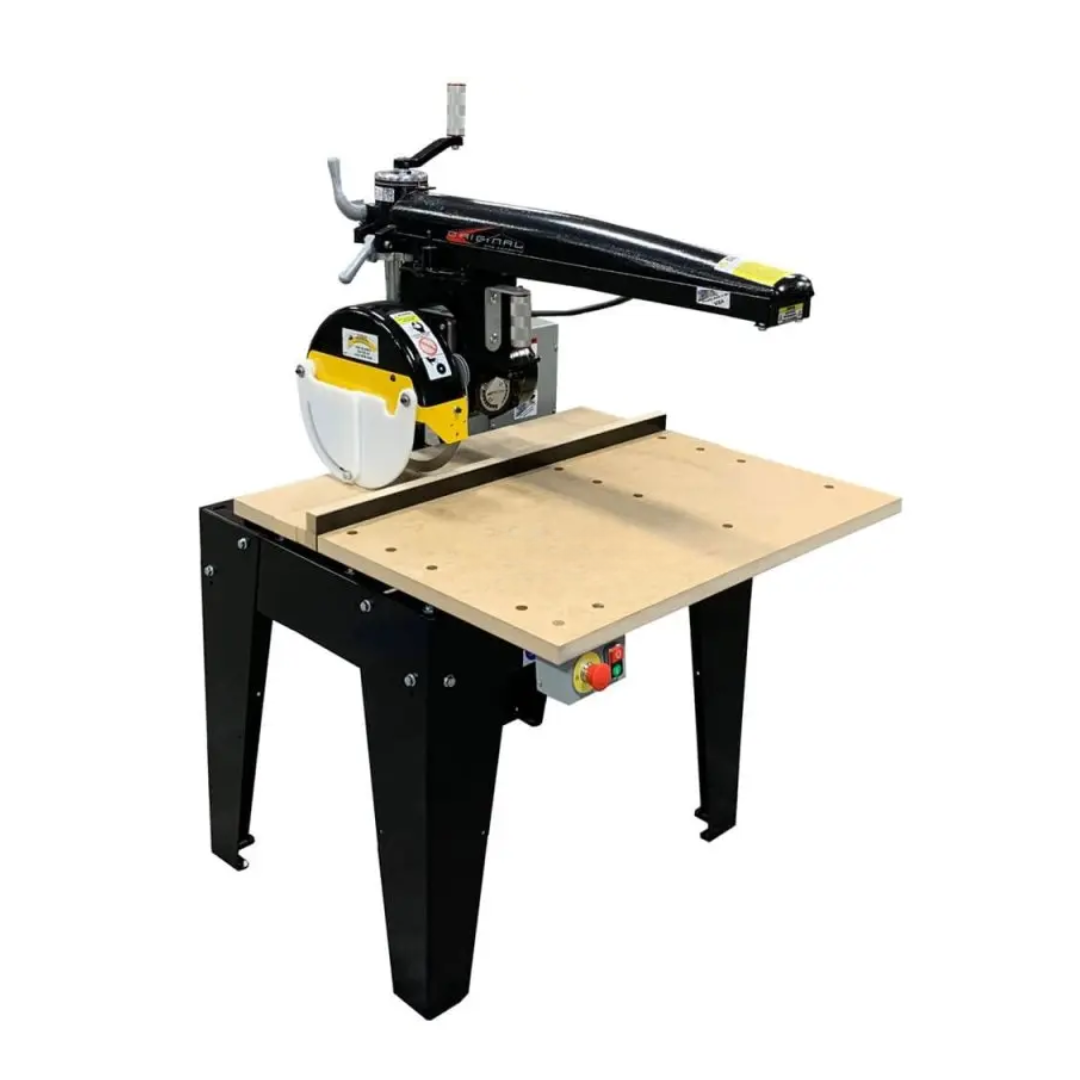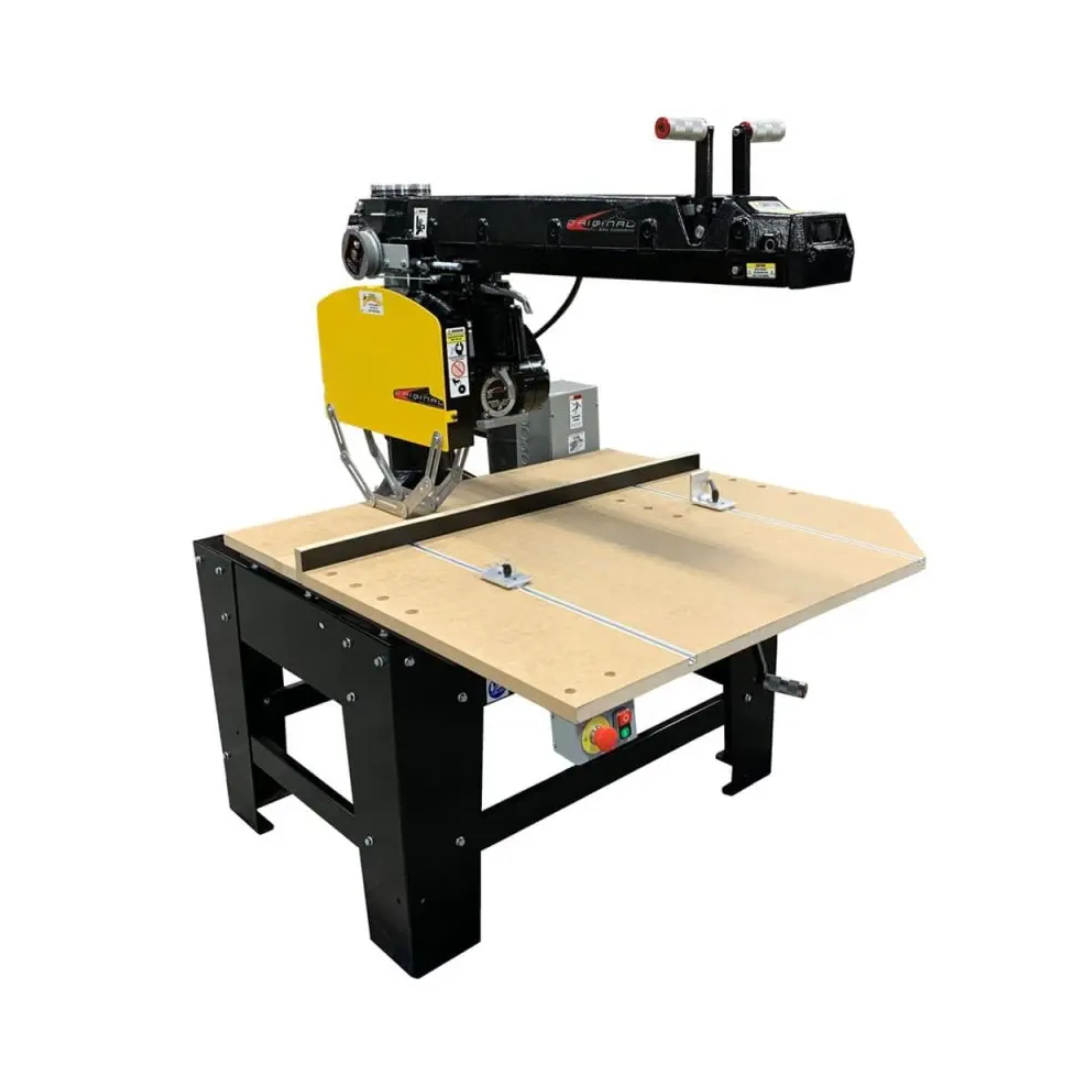Elite Metal Tools Articles
Industry news, tips, and updates on all things Elite Metal Tools
The Ultimate Guide to Radial Arm Saws
History of Radial Arm Saws
The radial arm saw was invented by Raymond DeWalt in 1922, revolutionizing the woodworking industry. Prior to this invention, woodworkers had to rely on a myriad of specialized saws for different types of cuts, often compromising on precision and efficiency. The introduction of the radial arm saw brought a multi-functional tool into the workshop, capable of performing a variety of tasks that would otherwise require multiple tools.
DeWalt's ingenious invention led to the formation of the DeWalt Products Company, which later became one of the leading manufacturers in the power tool industry. Since then, other reputable companies like the Original Saw Company have also entered the market, bringing their own innovations and improvements to this indispensable tool.
The radial arm saw has seen several technological advancements over the years, including improvements in safety features, power capabilities, and user-friendliness, making it an essential tool for both professional workshops and home garages.
Types of Radial Arm Saws
When shopping for a radial arm saw, you'll encounter a variety of models that differ in size, power, and features. Here are some types you should consider:
Benchtop Models
These are compact radial arm saws that are perfect for small workshops or DIY projects. They are portable but offer limited cutting capacity.
Contractor Models
These are larger, more powerful, and are suited for heavy-duty operations. Contractor models are often seen in professional woodworking shops.
Industrial Models
Built for continuous use, these saws are the titans of the radial arm world. Brands like Original Saw Company offer industrial models that come with enhanced safety features and cutting capabilities suitable for large-scale manufacturing.
Key Features to Look for in a Radial Arm Saw
When choosing a radial arm saw, several features can make your tasks more efficient and accurate. Here are some key features to look for:
Horsepower and Blade Speed
The power of a radial arm saw is measured in horsepower (HP). Higher horsepower means the machine can tackle harder materials and make smoother cuts. Blade speed, often denoted in RPM (Revolutions Per Minute), is another factor affecting the quality of cuts. Brands like Original Saw Company often offer a range of horsepower and blade speeds to suit different needs. /product/9826
Safety Measures
Advanced safety features such as blade guards and anti-kickback devices are essential. These features can significantly reduce the risks associated with using such a powerful tool.
Versatility
Look for a model that allows for easy adjustments and has attachments for various cuts like ripping, crosscutting, and mitering. Some models even offer dado cutting capabilities.
How to Choose the Right Radial Arm Saw for Your Needs
Choosing the right radial arm saw requires a keen understanding of your specific needs. Here are some factors to consider:
Budget
Radial arm saws come in a wide range of prices, from budget-friendly benchtop models to high-end industrial machines. Determine your budget and needs to find a machine that offers the best value.
Space
Consider the amount of space you have available in your workshop. While benchtop models are compact, industrial models can take up significant space.
Frequency of Use
If you're a casual hobbyist, a lower-end model may suffice. However, if you're running a professional workshop, investing in a high-end model from a reputable brand like Original Saw Company may be more cost-effective in the long run.
Material Types
The materials you'll be working with also influence your choice. Hardwoods and metals require more powerful models, whereas softer woods can be easily managed with less powerful saws.
Maintenance Tips
Regular maintenance is key to prolonging the life of your radial arm saw. Here are some tips:
-
Lubrication: Keep all moving parts well-lubricated to ensure smooth operation.
-
Blade Cleaning: Accumulated resin and wood chips can affect performance. Clean the blade regularly.
-
Alignment Checks: Regularly check and adjust the alignment of the blade to ensure accurate cuts. /product/12454
Safety Guidelines
Using a radial arm saw requires meticulous attention to safety. Even though modern models come with a range of safety features, the tool is still powerful and can be hazardous if not used correctly. Here are some safety guidelines to follow:
-
Read the Manual: Familiarize yourself with the operating manual and guidelines provided by the manufacturer.
-
Wear Appropriate Gear: Use safety glasses, hearing protection, and a dust mask.
-
Check the Machine: Before starting, inspect the saw for any malfunctions or loose parts.
-
Maintain a Safe Distance: Always keep your hands well clear of the blade and maintain a safe working distance.
-
Use Push Sticks: For small or narrow cuts, use push sticks or featherboards to guide the material.
Common Projects and Uses
Radial arm saws are known for their versatility and can be used for various tasks:
-
Cross-cutting: Cutting lumber to length.
-
Ripping: Cutting lumber along its length.
-
Mitering: Creating angled cuts for frames and moldings.
-
Beveling: Making slanted cuts along the edge of the material.
-
Dadoing: Creating grooves or slots in woodworking projects.
Brands like Original Saw Company provide machines capable of performing these tasks and more, expanding the scope of what you can do in your workshop.
Frequently Asked Questions
What is the advantage of a radial arm saw over a table saw?
While table saws excel at ripping and are generally easier to use for that purpose, radial arm saws offer greater versatility for tasks like cross-cutting, mitering, and dadoing.
Can you use a radial arm saw for metal cutting?
Yes, with the appropriate blade and settings, some radial arm saws can cut through metals like aluminum and brass. However, it’s advisable to check the manufacturer's guidelines first.
Troubleshooting Common Issues
Like any other tool, radial arm saws are not without their challenges. Here are some common issues and how to troubleshoot them:
-
Inaccurate Cuts: If you're not getting accurate cuts, it could be due to a misaligned blade or fence. Regular calibration is key.
-
Excessive Vibration: This can be due to an unbalanced blade or perhaps the machine itself is not properly secured to the table or floor.
-
Motor Overheating: Make sure to keep the motor clean from sawdust accumulation and follow the manufacturer's guidelines on proper usage durations.
Radial Arm Saw vs. Table Saw
Both radial arm saws and table saws have their own set of advantages and limitations. Here's a quick comparison:
-
Versatility: Radial arm saws excel in their ability to make a variety of cuts, while table saws are often more specialized.
-
Footprint: Table saws usually take up more space compared to radial arm saws, making the latter more suitable for smaller workshops.
-
Ease of Use: Table saws are generally easier to use for ripping tasks but require additional tools for miter and bevel cuts, which a radial arm saw can accomplish on its own.
Companies like Original Saw Company offer high-quality machines in both categories, allowing you to choose based on your specific needs.
Testimonials and User Reviews
Customer satisfaction speaks volumes about a product's quality and reliability. Users of Original Saw Company radial arm saws often commend the machines for their durability, precision, and advanced safety features. Whether you are a professional carpenter or a weekend warrior, reviews and testimonials can offer valuable insights into what you can expect from your machine.
Summary
The radial arm saw is a versatile, powerful tool that has evolved significantly since its invention. Whether you are a professional or a hobbyist, understanding the types, features, and proper usage of radial arm saws can greatly enhance your woodworking experience. From reputable brands like Original Saw Company to safety tips and troubleshooting, this comprehensive guide has aimed to cover all aspects of this indispensable tool.
By equipping yourself with the right knowledge and adhering to safety guidelines, you can ensure that you get the most out of your radial arm saw, making it a worthy investment for any workshop.

